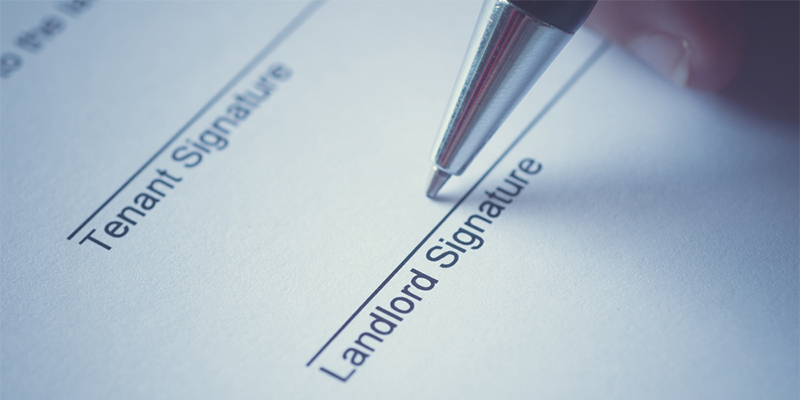The landlord tenant agreement is an important document that details the responsibilities of both parties. As such, landlords should know the basics of a rental contract, as well as how to make one. If you’re a first-time landlord, here’s a helpful guide to get you started.
What is a Rental Contract?
A rental contract, also known as a rental agreement, is a legal document signed by tenants and landlords. It establishes the rights and responsibilities of each party.
For example, a landlord is responsible for creating a safe and habitable environment for the tenant. In turn, the tenant is responsible for keeping the rental property clean and well-maintained. Rental contracts also serve as legal protection in case there are issues with the tenant, landlord, or the leased property.
Rental Contract vs Lease Agreement
Most people use rental contracts and lease agreements interchangeably. While these two documents are very similar, they differ when it comes to tenancy periods.
A rental contract has a short-term tenancy period — usually 30 days. The standard rental agreement renews every month until either the tenant or landlord terminates the contract.
One advantage of having a rental contract is that both tenant and landlord can renegotiate the terms of the contract on a month-by-month basis. For example, landlords can raise the rent to remain competitive. However, one downside of a rental contract is a potentially high turnover rate. Landlords may have to work harder to keep the rental property occupied throughout the year.
Meanwhile, a lease contract has a long-term tenancy period — usually 12 months or longer. The basic lease agreement is terminated at the end of the agreed-upon period. With a lease agreement, landlords have a more stable rental income while tenants don’t have to worry about a rent increase. However, terms cannot be negotiated until the end of the lease agreement.
Apart from the tenancy period, though, rental contracts and lease agreements have similar content. They establish the terms of tenant-landlord relationships.
What Is Included in a Rental Contract?
A basic rental agreement or residential lease agreement should contain these important components:
1. Tenant Names and Contact Information
The residential rental agreement should contain the names and contact information of tenants. It’s important to have everyone who intends to occupy the rental property sign the rental contract. In case one tenant fails to pay the rent, the other tenants can be held equally responsible. Similarly, if one tenant violates the lease terms, other tenants can also be evicted.
In this section, the landlord can also establish occupancy limits. Only those included in the rental contract, as well as their minor children, will be allowed to live in the rental property. You can also have a stipulation that guests can only stay a maximum number of days. If there are unapproved tenants, the landlord has the right to terminate the lease and evict the tenants.
Landlords can also set a maximum occupancy limit based on the square footage of your property. Make sure to check federal, state, and local regulations to determine enforceable occupancy limits in your area.
2. Landlord Name and Details of Rental Property
A lease contract should include the name of the landlord, as well as his/her contact information. Tenants must know how to contact their landlord and where to send notices, requests, or complaints. It’s also crucial to include details of the rental property including the complete address. If you are offering parking and storage, the contract should identify which specific spot or stall a tenant has access to.
3. Lease Terms
The lease term explicitly states the length of tenancy. It can be a month, 6 months, 12 months, or longer. The lease term should indicate the start date of the rental contract. Most lease terms begin on the first day of the month. The expiration date of the lease should likewise be included.
4. Rent Details
A residential lease agreement must include the dollar amount of rent that tenants pay each month. Landlords should specify when the rent is due (typically on the first day of every month), acceptable payment options (personal check, debit, or credit card), and how to pay rent (in-person, mail, or online).
The rental contract also contains information about late rent payments. For example, will the landlord have a grace period for rent payments before he/she charges a late fee? In addition, the landlord can establish consequences for late rent payments — such as possible eviction from the rental property.
5. Security Deposits
A basic house rental agreement will have stipulations on how the security deposit is kept and/or used. For example, can the landlord use the security deposit to claim unpaid rent, to pay for damage caused by the tenant, or for move-out cleaning costs? The landlord can also state that the security deposit cannot serve as last month’s rent. In addition, the lease agreement should cover when and how the security deposit will be returned to the tenants.
6. Maintenance and Repairs
Even if you opt for a simple lease agreement, it should clearly detail the responsibilities of both landlord and tenant when it comes to maintaining the rental property. The rental contract may stipulate that the landlord is responsible for maintenance and repairs. Meanwhile, tenants are required to maintain the rental property, as well as provide proper notice in case there are maintenance issues such as water damage or mold removal. Landlords can also impose restrictions on what alterations tenants can and cannot do to the rental property.
7. Rules and Regulations
Landlords must enumerate the rules and regulations for their rental property. Having these policies listed in the rental contract can ensure compliance from the tenants. This section can include a no-smoking policy, pet-related policies, proper use of amenities, and what constitutes criminal or illegal activity. The rental contract should also include fines and penalties for tenants who violate these rules and regulations.
Important Clauses to Include in Your Rental Contract
Apart from the basic components of a rental contract, there are important clauses that landlords should consider including as well. If these clauses are not included in the standard rent agreement, landlords can also create lease addendums to address specific issues or concerns.
- Landlord’s Right of Entry: It’s important to include a clause regarding the landlord’s right to enter a rental property to prevent claims of illegal entry or violation of privacy from tenants. This clause establishes procedures for making repairs or showing the unit, as well as proper notice prior to entering the premises.
- Disturbance Clause: A disturbance clause can help maintain peace and quiet in your rental property. Tenants have to keep noise levels low at certain hours (from 9 p.m. to 7 a.m.) so that neighbors do not complain of excess noise or disturbance.
- Termination of Lease: Landlords may opt to have a termination clause in their lease. IT establishes valid reasons for terminating the rental contract early. For example, the landlord may break the contract and evict a tenant who has not paid rent for several months. This clause can also protect tenants in case their landlord does not fulfill his/her duties and responsibilities.
- Dispute Resolution: Including a dispute resolution clause in the rental agreement can help landlords avoid costly and time-consuming litigation. Landlords and tenants can pursue alternative methods such as arbitration and mediation.
- Required Landlord Disclosures: Depending on your state, landlords are required to make disclosures regarding rent control, smoke and carbon monoxide alarms, presence of lead-based paint, a previous case of mold, and/or bed bugs, recent flooding, and non-refundable fees.
Importance of Having a Rental Contract
 The importance of having a rental contract cannot be overstated enough. A rental contract is critical in setting expectations for both the landlord and the tenant.
The importance of having a rental contract cannot be overstated enough. A rental contract is critical in setting expectations for both the landlord and the tenant.
A simple but clearly defined lease agreement can pave the way for a good landlord-tenant relationship. If tenants are happy, they’re likely to pay rent on time and extend their lease contract. Meanwhile, if landlords are happy, they’re able to provide quality service to their tenants.
Since this is a legal document, make sure to have your attorney or property manager look over the provisions. This is to ensure the rental contract is fair and does not violate the laws and rights of both parties.
Need help with drafting your rental contract? Consider the benefits of having an experienced property manager by your side. Property managers know how to create lease agreements that protect both the landlord and the tenant. If you’re interested, feel free to browse the Rental Choice online directory to find the best property management company in your area!
RELATED ARTICLES:
- 15 Key Questions To Ask A Landlord Before Renting
- How Do You Calculate Rental Income?
- The Ins And Outs Of Rental Property Maintenance and Repairs




 Company
Company